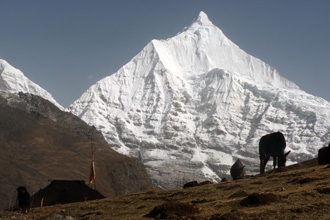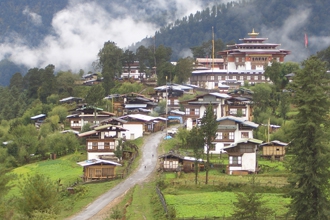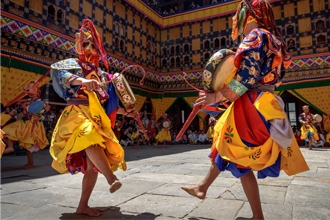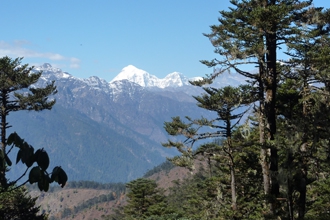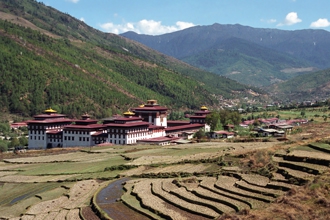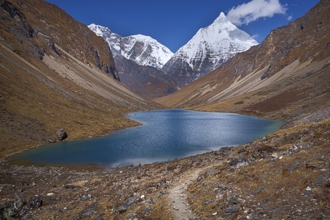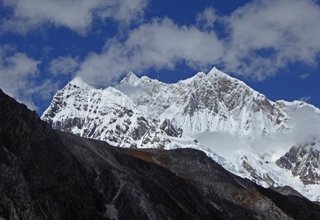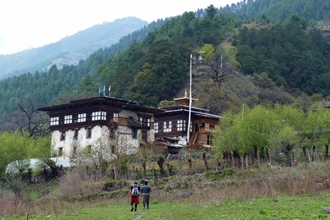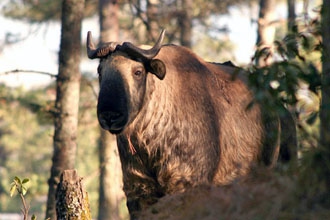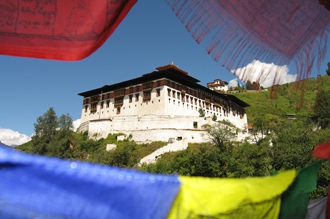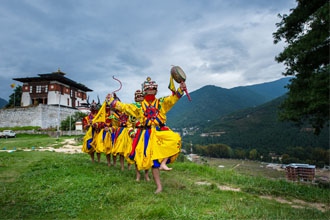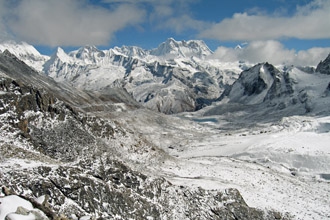Search Tailor Made Destinations
Gangtey Lodge
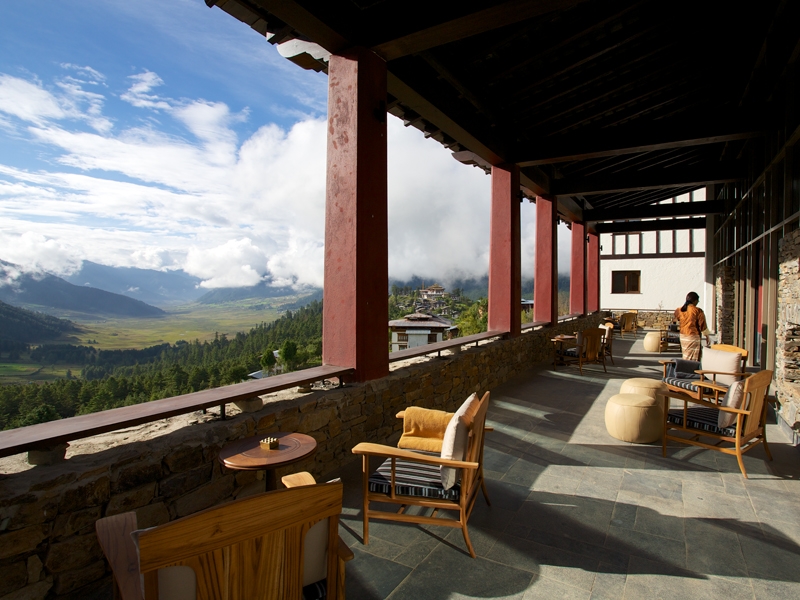
Views from the terrace @gangteylodge
The epitome of understated luxury teamed with exceptional service and enlightened environmentalism, the Gangtey Lodge recently featured in BBC's popular hotel series - Life Beyond the Lobby. Overlooking the meadows, farmland and forested hills of the Phobjika Valley, Gangtey Lodge couldn’t offer a more tranquil and Zen-inducing setting. With the look of a traditional farmhouse, it is an artful blend of local styling - all carved wood and hand-cut stone - and modern amenities such as Scandi wood-burning stoves, freestanding rolltop baths and even ipad docks in the spacious suites. It has a spa set in a stone and glass outbuilding with a fabulous hot stone bath from where you can enjoy mesmeric views whilst soaking in petal-scented, mineral-rich water. The same enchanting vistas also dominate the elegant dining-area-come-lounge with its floor-to-ceiling windows and outdoor terrace. Built from natural local materials and designed for maximum energy and water efficiency, Gangtey Lodge has an impressive approach to sustainability, fully in keeping with Bhutan's own world-beating environmental credentials.
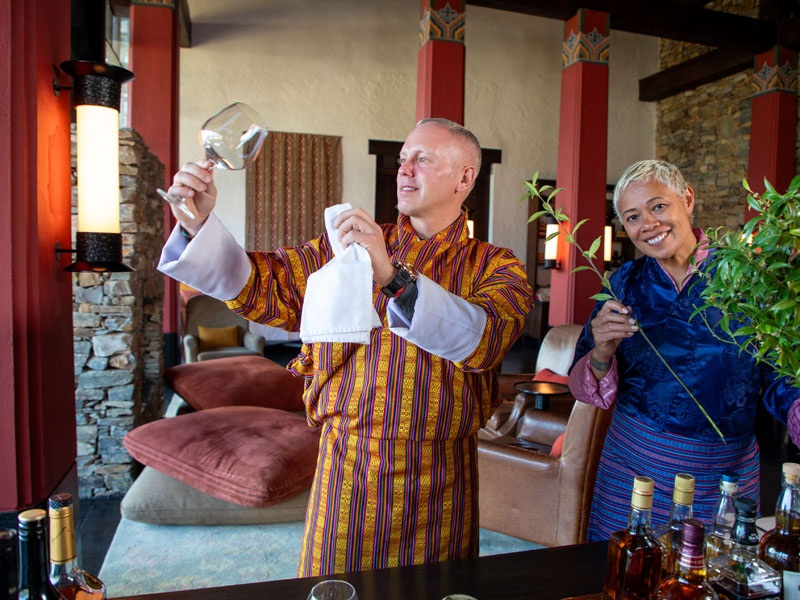
Life Beyond the Lobby - BBC Studios
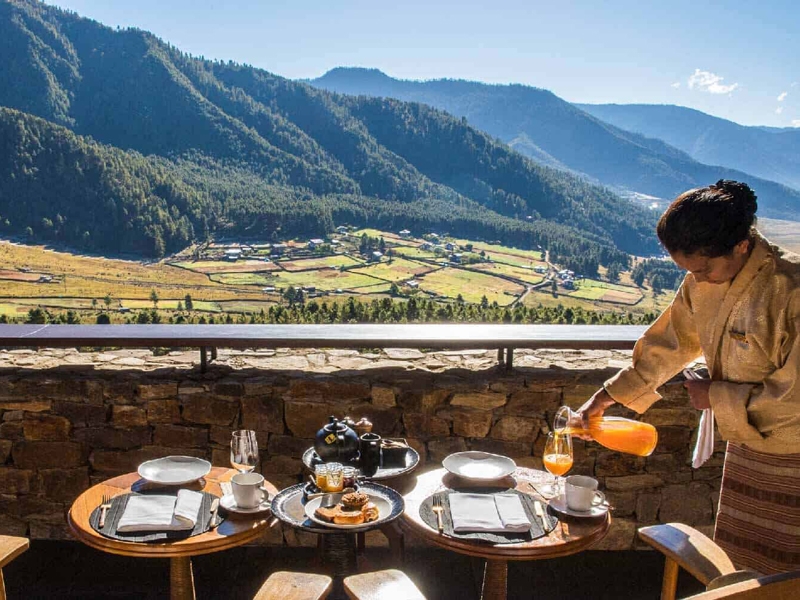
Breakfast on the terrace @gangteylodge
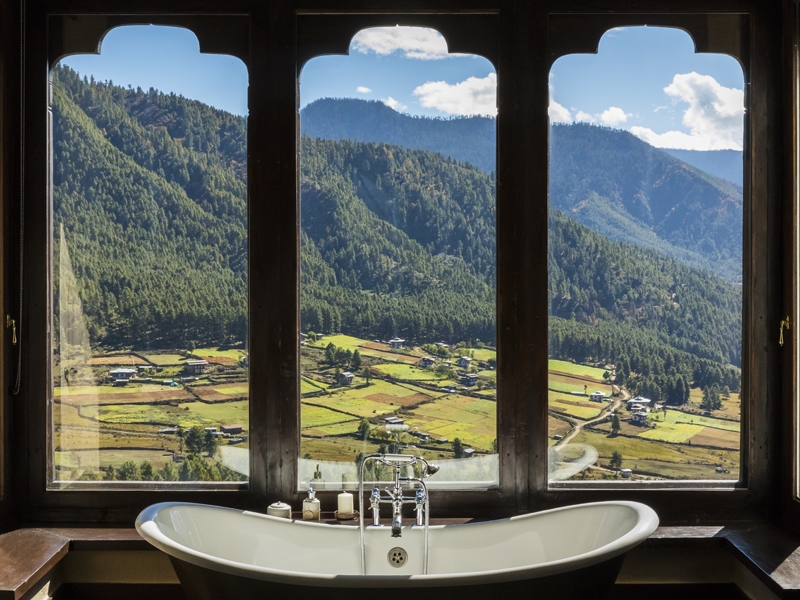
Bath with a view @gangteylodge
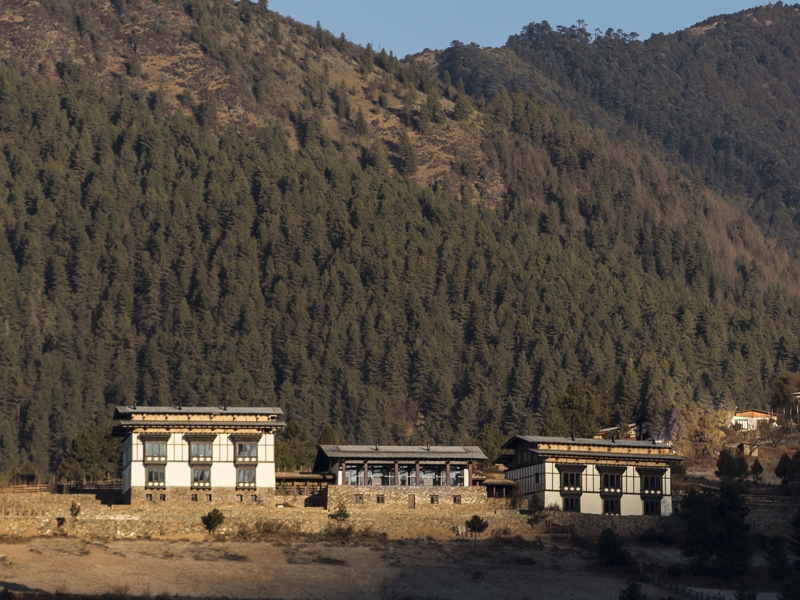
In the Phobjika Valley @gangteylodge
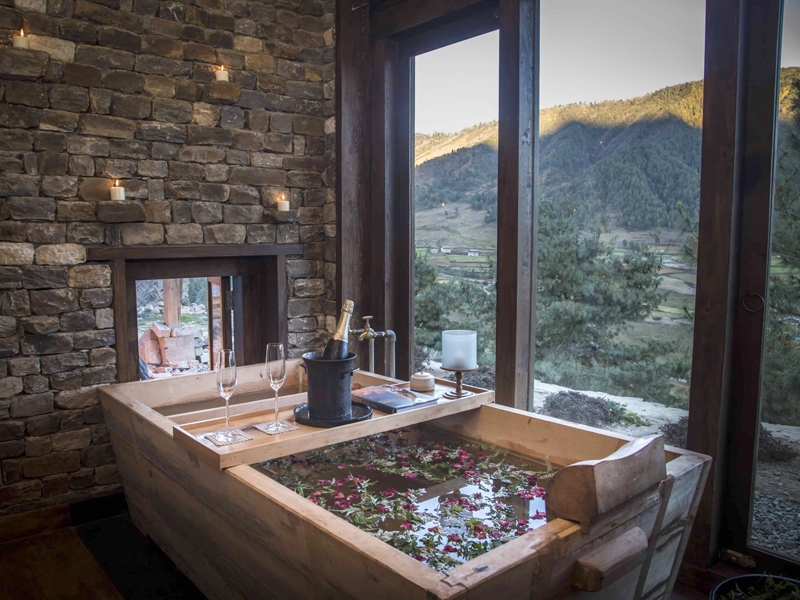
Hot stone bath @gangteylodge
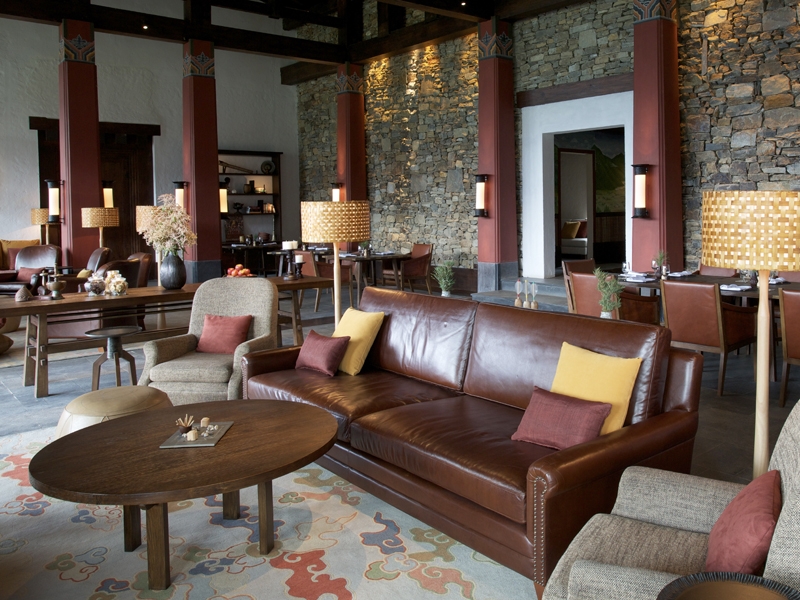
Lounge to relax in @gangteylodge
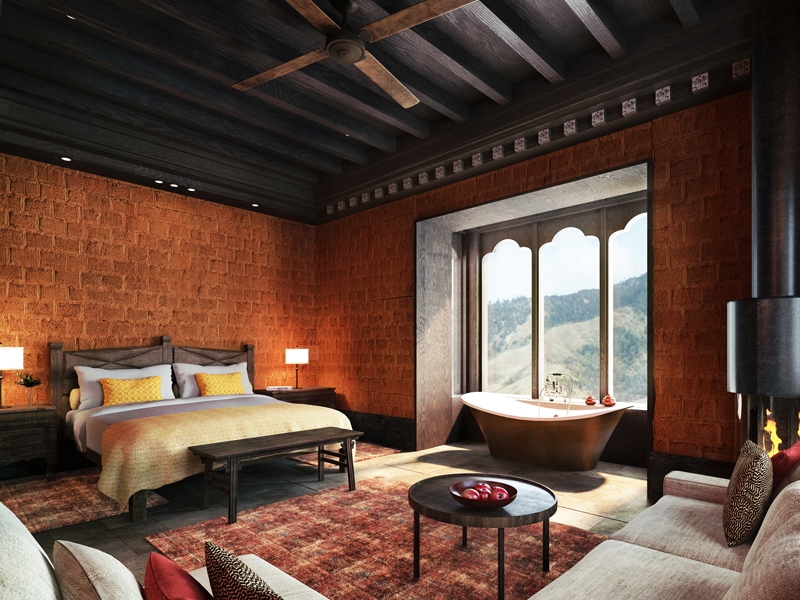
Spacious guest suite @gangteylodge
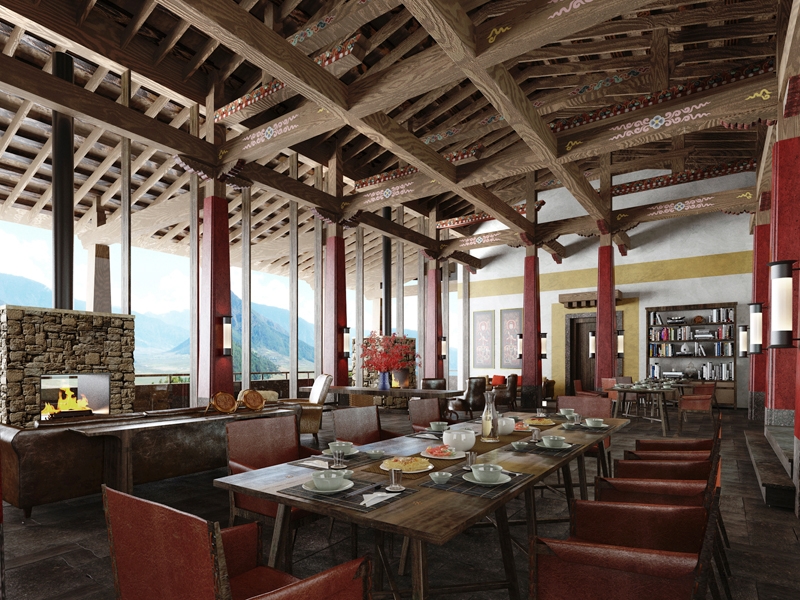
The dining area @gangteylodge
Other accommodation in Bhutan
Take to the trail beyond the towns and valleys of Bhutan and you can enjoy fantastic trekking amidst some of the finest mountain scenery in the world. You can trek north into the high Himalaya, go south to remote Dagana or trek in the east of the country where few visitors ever venture.
Our M.D, Steve Berry, has recently returned from our exceptional trekking holiday into the remote region of Eastern Bhutan. The trek traverses the scenic ‘Red Rice Route’, used in ancient times to ship rice over to Bumthang.
This trip is a chance to step back in time, trekking for days on end without a road, vehicle or tourist in sight. Instead you will find yourself surrounded by beautiful tree orchids, uninhabited mountain country, and ancient villages. You’ll discover elaborate stepped paths, originally built for the ‘Red Rice Route’ as a means of transporting rice from the fertile valleys of the east to the wealthy families of Bumthang, in the heartlands of the country. Steve’s personal highlight of the trek was reaching the highest pass on the Rodang La, as from here you are rewarded with wonderful, panoramic views of the Eastern Himalaya.
In addition to trekking along this ancient route you will also attend a vibrant festival and walk up to Taktsang Monastery in Paro - the legendary Tiger’s Nest and visit Tashigang Dzong – one of the most important in all the Thunder Dragon Kingdom.
For those looking to escape modern life and discover a different side of the Thunder Dragon Kingdom, this trekking holiday is a hugely rewarding experience.
Due to the popularity of our Gentle Walking Bhutan trip, that explores the Western side of the country, Managing Director, Steve Berry, thought it would be a great idea to introduce another Gentle Walking trip in Bhutan. This time uncovering the more mysterious, eastern corner of the Dragon Kingdom. So, in November of 2018 Steve travelled to Bhutan to explore all the east has to offer and to see how far it’s come since his last visit in 1990. Him and a few of his friends embarked on glorious day walks through the remarkable hill top towns and remote villages of Lhuentse, Trashiyangtse, Ura, and Tashigang, which all offered an authentic feel of old Bhutan.
Although the whole area is still very much off-the-beaten track, it’s certainly not short of wonderful architectural and cultural highlights. In fact, many of Bhutan’s most important dzongs and monasteries are found in the east including Lhentse Dzong, Gom Kora and Trashiyangtse Bridge. Aside from the ancient architecture, the scenery that surrounds the east is just as impressive. The wild, unspoilt valleys make a wonderful setting for gentle strolls with plenty to see along the way. One of Steve’s favourite walks is from the village of Bamji through to Bumdeling National Park where he saw the endangered Black-necked cranes and plenty more interesting wildlife.
Though the villages and towns still remain little changed, Steve noticed a lot of developments since his first visit to the east. The most notable one being the change in the hotels and lodges which were initially very basic have been vastly improved to accommodate more western tourists.
Reflecting on his time in Eastern Bhutan, Steve would recommend this trip to people who enjoy gentle walking and want to explore the east, it would also be an ideal itinerary for those looking to return to Bhutan for a second visit to see more of the country’s unique culture and landscape.
If you feel inspired to discover the hidden sights of Eastern Bhutan, find out more here, or call the office to discuss your travel plans.
Having travelled through Bhutan many times by car, Mountain Kingdoms Managing Director, Steve Berry, has often thought of how much fun it would be to complete the journey on a bike. Earlier in 2018, he had the opportunity to do so, on our Cultural Cycling Tour of Bhutan. Steve found it to be the ideal destination to explore on two wheels, with its scenic roads, spectacular countryside and engaging sights.
Their adventure began with a gentle ride in the beautiful Paro Valley followed by a group visit to the Drugyel Dzong, a fascinating building with rich history. From here they enjoyed a dramatic view of Taktsang, the iconic sacred Buddhist site and temple complex located in the cliff-side of the upper Paro Valley, before cycling to the capital of Thimphu where they experienced impressive views and explored Thimphu’s best attractions. After some time to rest on the optional car journey up to the Dochu La they embarked on an utterly thrilling 42km downhill ride through forests and quiet backroads to the glorious Punakha Dzong. Steve described this as an incredible experience and the highlight of his trip.
Following their Dzong visit, they rode on to Wangdipidrang and along the Valley, where they reached their vehicle and continued their journey with a drive up to Gangtey. In late autumn and winter, Black-necked Cranes migrate to the Gangtey Valley and add unique sightseeing opportunities to any visit. Steve and his group enjoyed some pleasant cycling in the Valley, drove over the Pele La all the way down to Trongsa, home of the largest monastery in the kingdom. They rode over the Keke La pass and cycled on to the holy valley of Bumthang. The cycle ride then drew to a close as they reached their last but certainly not least cultural highlight of the tour, Jambay Lhakhang, one of the country's oldest temples.
There is no need to worry about being extremely athletic to complete this tour, as a huge amount of the cycling is downhill, with the choice to opt out of the very steep ascents. This holiday is perfect for leisure cyclists, with a moderate level of fitness.
This trip has a support vehicle on hand every day, so you can enjoy the riding with peace of mind, knowing you can always get a lift if you fancy a rest. The tour is led by a knowledgeable Bhutanese guide who also acts as your personal mechanic!
Steve found that travelling through Bhutan on a bike enabled him to get to know the country on a much more personal and intimate level than he has done previously by driving.During his journey he met with many more locals along the way, and experienced many more places of cultural interest, including monasteries, small friendly townships and Buddhist shrines (Chortens).
Overall, a wonderful and rewarding adventure.
This is a film about our MD, Steve Berry’s expedition to try and climb the highest mountain in Bhutan, Gangkar Punsum, 24,770ft/7,550m, thought also to be the highest unclimbed peak in the world. The peak lies astride the northern border with Tibet and just east of the region known as Lunana. It serves to give you a flavour of what the remote country is like around Gangkar Punsum, and tells the story of the 1986 expedition. In 1986 the team approached the mountain via the Mangde Chu valley and attempted the south west ridge. The expedition was eventually forced to abandon its attempt due to horrendous weather conditions.
Mountain Kingdoms offers a trek that explores the Chamkhar Chhu valley which lies to the south of the mountain. It visits the unclimbed 7,000m peak of Melunghi Kang before ascending into 'Jumbo Jet' valley to explore the southern approaches to the peak. We call this trek 'Gangkar Punsum Approach'. This side of the mountain is very much unexplored country and it was here in 2014 that Steve Berry and companions found a set of tracks that Steve believes can only belong to the Yeti.
You can also read an account of Steve’s expedition in his book Straight up.
Due to the popularity of our Gentle Walking Bhutan trip, that explores the Western side of the country, Managing Director, Steve Berry, thought it would be a great idea to introduce another Gentle Walking trip in Bhutan. This time uncovering the more mysterious, eastern corner of the Dragon Kingdom. So, in November of 2018 Steve travelled to Bhutan to explore all the east has to offer and to see how far it’s come since his last visit in 1990. Him and a few of his friends embarked on glorious day walks through the remarkable hill top towns and remote villages of Lhuentse, Trashiyangtse, Ura, and Tashigang, which all offered an authentic feel of old Bhutan.
Although the whole area is still very much off-the-beaten track, it’s certainly not short of wonderful architectural and cultural highlights. In fact, many of Bhutan’s most important dzongs and monasteries are found in the east including Lhentse Dzong, Gom Kora and Trashiyangtse Bridge. Aside from the ancient architecture, the scenery that surrounds the east is just as impressive. The wild, unspoilt valleys make a wonderful setting for gentle strolls with plenty to see along the way. One of Steve’s favourite walks is from the village of Bamji through to Bumdeling National Park where he saw the endangered Black-necked cranes and plenty more interesting wildlife.
Though the villages and towns still remain little changed, Steve noticed a lot of developments since his first visit to the east. The most notable one being the change in the hotels and lodges which were initially very basic have been vastly improved to accommodate more western tourists.
Reflecting on his time in Eastern Bhutan, Steve would recommend this trip to people who enjoy gentle walking and want to explore the east, it would also be an ideal itinerary for those looking to return to Bhutan for a second visit to see more of the country’s unique culture and landscape.
If you feel inspired to discover the hidden sights of Eastern Bhutan, find out more here, or call the office to discuss your travel plans.
The curious looking takin is the national animal of Bhtuan and legend has it that the takin was created by the Divine Madman, Drukpa Kunley, when he combined the head of a goat with the bones of a cow! It actually looks more like a moose crossed with a small cow but see for yourself at the Takin Reserve close to Thimphu.
Bhutan is renowned for its amazing festivals that assault the senses with a riot of noise and colour. Festivals, or tsechus, bring together the religious and secular in spectacular celebration and are the highlight of the year in towns and villages across the country. The Paro and Thimphu festivals are the centrepiece occasions but smaller, more intimate tsechus are held in most towns and villages.
Talk to one of our
well-travelled experts
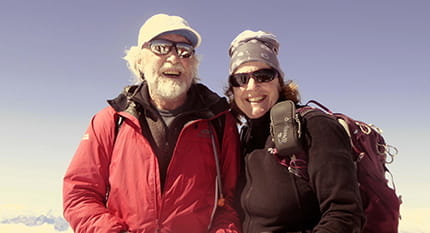
Start planning your next adventure now
- Call: +44 (0) 1453 844400
- Email: info@mountainkingdoms.com
